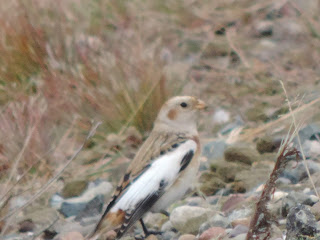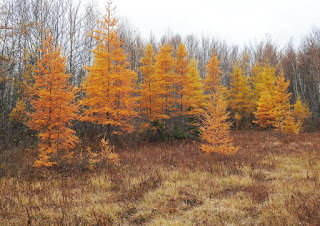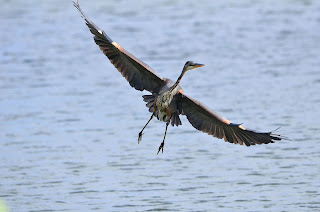Nature
Moncton Information Line – 3
November,
2018 (Saturday)
To
respond by email, please address your message to the Information Line
Editor, nelsonpoirier435@gmail.com
Please
advise the Editor if any errors are noted in wording or photo
labelling.
Edited
by: Nelson Poirier nelsonpoirier435@gmail.com
Transcript
by: Catherine Clements
Info
Line #: 506-384-6397 (384-NEWS)
**Mother
Nature has not been gentle on us the past few days, but all is going
to change tomorrow, Sunday afternoon, November 4th, for the Nature
Moncton visit to the Atlantic Wildlife Institute. The sun is to be
shining, and temperature of 8°C.
Participants are asked to bring along any left-over Halloween
pumpkins as food for the animals there. Atlantic Wildlife Institute
manager Pam Novak has suggested folks wear rubber boots and warm
clothing, as much of the tour will be outside and may be muddy in
some spots after all the rain. The two meeting points at 12:00 noon
and 12:30 are outlined in the write-up below. Note that the notice on
the website is incorrect, as this event was weather-postponed from
last Sunday.
A
contact number, if needed to reach the group tomorrow, will be
866-2752.
Tour
of the Atlantic Wildlife Institute
Date:
November 4
Time
of Tour: 1:00 pm
Most
of us are aware of the Atlantic Wildlife Institute in Cookville, NB
and the work they do rehabilitating injured or sick wildlife.
In addition to their rehabilitation work, the Institute contributes
to our awareness of environmental problems and issues as well as
providing education about wildlife to kids and other members of the
community. So if you’d like to see some wildlife up close,
and even some – skunks come to mind – that you’d rather not
see, come join us for a 1 to 2 hour tour of their facilities
beginning at 1:00 pm on Sunday October 28th. People
in the Moncton area can meet for carpooling in the Champlain Place
parking lot behind the Burger King at 12:00 noon. For people
who wish to join the group in the Sackville area, we will meet there
at the Sackville Tourist Information Centre on Mallard Drive (by the
Sackville Waterfowl Park) at 12:30.
Please
register for the tour with Louise Nichols at nicholsl@eastlink.ca
Individual
donations to the Atlantic Wildlife Institute would be appreciated.
All are welcome to join the group, Nature Moncton member or not.
**Clarence
Cormier reports action is getting brisk around his Grande Digue
feeder yard. He has had a FOX SPARROW [Bruant fauve] visiting. On
Wednesday the first AMERICAN TREE SPARROW [Bruant hudsonien] of the
season arrived, and on Friday approximately 100 BOHEMIAN WAXWINGS
[Jaseur boréal] were in the area in the morning, and then spotted 3
CEDAR WAXWINGS [Jaseur d'Amérique] in the afternoon. Recent reports
are suggesting an active bird season ahead.
**Doreen
Rossiter had a male RED-BELLIED WOODPECKER arrive to her Alma feeder
yard; it was seen daily from October 24th to October 31st. Doreen was
surprised to have a female Red-bellied Woodpecker arrive to the
feeders on Friday, so there’s obviously a pair of this species in
the Alma area. Doreen continues to have both mature and immature
WHITE-CROWNED SPARROWS [Bruant à couronne blanche] as regular
patrons.
**Mac
Wilmot got a photo of a late-flying dragonfly on November 1st:
an AUTUMN MEADOWHAWK [Sympétrum
tardif].
This is often one of the last-flying dragonflies, flying into
October and sometimes into November, as this one did. We had a cold
snap in October, but obviously some got through that to fly in the
warmer days at the moment. Mac’s find is a female. The males would
show red on the body. Note also the short yellow to orangish-red
pseudostigma
(the
small oblong spots on the front outer edges of the wing) in this
species. Also note the legs appear to be dull brown with no trace of
black on them, as other Meadowhawk species have. There could still be
a handful of other species that could fly at the moment, but the
Autumn Meadowhawk is the only one truly expected to do so. The
familiar Bluet Damselfly [Agrion] and the COMMON GREEN DARNER
[l'Anax] have been reported in New Brunswick in November in other
years. Be on the watch for these late-flying species as a last hurrah
of the season, or maybe even other surprise species. Thanks to Gilles
Belliveau for supplemental info.
Mac
also sends a photo of the not particularly hidden away cache of JACK
PINE [Pin gris] cones placed by a RED SQUIRREL [Écureuil roux] for
later dining.
**The
Redpoll [Sizerin] are moving on down. After sightings recently in
Escuminac and Neguac,
Daryl Doucette reports he had one lone Redpoll appear at his urban
Moncton feeder yard on Thursday. Great to hear this northern visitor
that was a rarity last winter may be joining us this winter. They
often do not show up at feeders until a bit later, when the Birch
[Bouleau] catkin crop dwindles.
**Shawn
Cormier took a photo of a GALLIUM
SPHINX MOTH caterpillar
[chenille
du Sphinx du gaillet] he
had collected a few weeks ago. It is getting ready to pupate to its
winter cocoon to emerge as
the very striking adult moth next summer.
Nelson
Poirier
Nature
Moncton
AUTUMN MEADOWHAWK DRAGONFLY. NOV 1, 2018. MAC WILMOT
GALLIUM SPHINX MOTH AKA BEDSTRAW HAWKMOTH CATERPILLAR. NOV 2, 2018. SHAWN CORMIER
RED SQUIRREL CACHE. NOV 2, 2018. MAC WILMOT










































